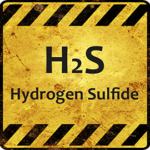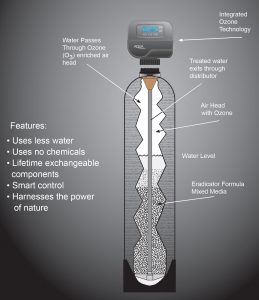
Rotten Egg Smell in Water Solutions
Rotten egg smell in water is most likely caused by Hydrogen Sulfide in Avon, Massachusetts and this region. In following, Hydrogen sulfide is a colorless gas that can exist naturally in groundwater. Sulfur-reducing bacteria present in groundwater use sulfur as an energy source to chemically change sulfates to hydrogen sulfide. Subsequently, the bacteria use sulfur from decaying plants and other organic matter in oxygen-deficient environments. They can occur in deep or shallow wells, and reside in plumbing systems. Also, Hydrogen sulfide can reveal itself in other ways too. Hot water heaters that have a magnesium rod used for corrosion control can chemically reduce sulfates to hydrogen sulfide.

Hydrogen sulfide also can enter surface water through springs and is most common in shale and sandstone. Concurrently, hydrogen sulfide gas has been associated with groundwater with low pH and/or groundwater with high levels of iron and/or manganese (typical water quality issues in New England). Additionally, Hydrogen sulfide has a pungent smell at low concentrations and most people can detect concentrations above 0.03 ppm. There is no Maximum Contaminant Level established by the United States EPA.
IS HYDROGEN SULFIDE A HEALTH RISK OR AESTHETIC PROBLEM?

Usually it is not a health risk at concentrations present in household water. However, hydrogen sulfide gas is flammable and poisonous at high concentrations. Notably, build-up of hydrogen sulfide concentrations in confined areas has been known to cause adverse health effects.
Bacteria in groundwater are responsible for most of the sulfide smells detected while sampling water wells. These are not often associated with high enough concentrations to be a health issue. In rare cases, sulfide presence may be due to sewage pollution. If you experience a hydrogen sulfide odor suddenly, consult with a water filtration system professional.
HOW DO I GET RID OF THE ROTTEN EGG SMELL IN MY WATER?

Ozone Water Filtration System
While there are a number of technologies available to remove the rotten egg smell in your water, it cannot be viewed in a vacuum. In following, the pH level, iron & manganese levels, as well as other contaminants present in the water must be evaluated for an effective, comprehensive solution to this issue. Below, some of the technologies and systems that may be used include:
- Ozone treatment creates a chemical reaction that precipitates sulfur. Ozone is effective for concentrations up to 10 ppm.
- Oxidizing filters will work for concentrations up to 6 ppm. The filter contains sand with a manganese dioxide coating that changes hydrogen sulfide gas to tiny particles of sulfur that are trapped inside the filter.
- Activated carbon filters can be effective when hydrogen sulfide is present in low levels (up to about 0.3 ppm). The hydrogen sulfide is absorbed onto the surface of the carbon particles. Filters require periodic replacement and can harbor sulfate-reducing bacteria
- Shock chlorination of your well may reduce the hydrogen sulfide-producing bacteria. Notably, it’s most effective in water with a pH between 5 and 7 and ineffective in alkaline (higher pH) water. An activated carbon filter may be necessary to remove residual chlorine or small amounts of remaining hydrogen sulfide.
- Oxidation removes hydrogen sulfide concentrations exceeding 6 ppm. Moreover, it can be done by aeration, chlorination, and potassium permanganate.
- Water heater modification is necessary when hydrogen sulfide is causing an odor within the water heating system. Replacing the magnesium corrosion control rod with one made of aluminum or other metals usually improves the situation, however, you should check the manufacturer’s warranty on the water heater to make sure you aren’t voiding the warranty.
H2O Care is an established full service, Massachusetts based water filtration and testing organization, originally formed in 1989 with offices in Middleton, Lakeville & Stow, Mass. See our published articles in Water Technology Magazines at https://h2ocare.com/. Contact us at service@h2ocare.com or 800-539-1100.

Water Filtration Solutions


